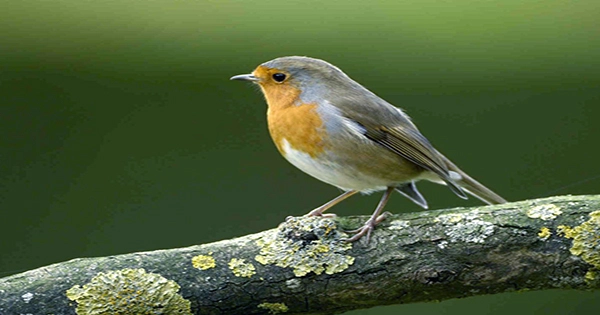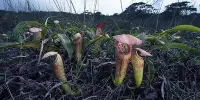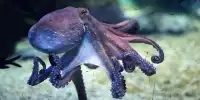Welsh bird species make up 25 percent of the Red List, which indicates that they are in danger of extinction and require conservation assistance. The most recent assessment of the condition of birds in Wales was conducted 20 years after the initial review when the Red List was only about half as long as it is now.
The 220 bird species that regularly occur in Wales were evaluated for the report, Birds of Conservation Concern Wales, which was put together by organizations including the Welsh Ornithological Society, the British Trust for Ornithology, and the RSPB in collaboration with Natural Resources Wales.
Wales currently has 60 bird species on the Red List, 91 on the Amber List, and 69 on the Green List.
The status of each species is evaluated in the Birds of Conservation Concern in Wales report using a set of rigorous standards. These are used to calculate how the Welsh population of the species is changing. The Welsh population is placed in a broader context by taking into account the species’ conservation status in the UK, Europe, and the world.
The Red List: Swift, Greenfinch, and Rook, well-known breeding species in sharp decline throughout the UK, are among the new additions to the Welsh Red List. The list has also expanded to include Purple Sandpiper due to a rapidly declining Welsh wintering population as well as Leach’s Petrel, an enigmatic seabird in steep decline throughout its range. Now considered to be birds in danger of permanently vanishing from Wales, these species join other well-known conservation priorities like Curlew, Hen Harrier, and Turtle Dove.
Upland and agricultural areas are home to a large number of the species on the Red List. In many parts of Wales, it is now impossible to find Starling, Tree Sparrow, Yellow Wagtail, or Yellowhammer, while iconic mountain and moorland species like Ring Ouzel, Merlin, and Black Grouse continue to face grave threats. Welsh woodland bird populations are well known, yet many of them, notably the Lesser Spotted Woodpecker, Willow Warbler, and Spotted Flycatcher, are also listed on the Red List. Another recent inclusion is the Goldcrest, the smallest bird in the UK, whose population in Wales has been rapidly declining in recent years.
On the coast: Before the effects of avian influenza could be considered, Wales 4 for Birds of Conservation Concern had its assessment. However, breeding seabird species have long struggled in Wales, and the majority already posed a threat to their survival before the disease’s emergence.
The following species are still on the Red List: Kittiwake, Puffin, Black-headed Gull, Common, Arctic, and Sandwich Tern. Wales is home to large numbers of seabird colonies that breed, making the collapse of these colonies a global concern.
Amber List: Three migrant species that breed in Europe and spend the winter in sub-Saharan Africa were moved from the Green List to the Amber List due to declines in the populations of Wheatear, Garden Warbler, and House Martin. Numerous additional “Afro-Palearctic” migrant species are also in decline, but it is unclear what, if anything, is to blame, such as habitat loss or a lack of invertebrate prey. Closer to home, the Welsh Chaffinch has been added to the Amber List due to population losses connected to the disease trichomonosis.
Other species have been added to the Amber List because of the larger significance of their Welsh populations, which account for more than half of the UK total for each species. For instance, recent losses are concerning because Wales is home to more than three-quarters of the UK’s Choughs. Along with its wintering population of Spotted Redshank, the nation’s breeding populations of Manx Shearwater, Pied Flycatcher, Goshawk, and Hawfinch make up more than half of the UK total.
Swifts are listed on the Red List for the first time close to our homes, and House Martins are listed on Amber for the first time, indicating the availability of nesting habitat and bug food, maybe both in Wales and on their long migrations to Africa.
In response to the Trichomonas infection that was spread at garden feeding stations, Greenfinch migrates to Red and Chaffinch to Amber.
However, there is some good news: certain species that were formerly on the Red List and are now on the Amber List have improved, showing some improvement in their population trends. These include the Pied Flycatcher, Bullfinch, Great Black-backed Gull, Goldcrest, and Common Sandpiper.
The Green List: Despite the fact that the study provides many reasons for concern, several success stories in conservation stand out.
The Red Kite’s inclusion on the Green List, which has been a symbol of Welsh conservation efforts for more than a century, is a prime illustration of how nature is recovering.
During the first half of the 20th century, the Red Kite nearly went extinct as a British bird because so few pairs survived in isolated Welsh valleys. Since then, the species has been saved because to persistent conservation efforts. More than 2,500 Red Kite pairs now reside in Wales, and the species has been added to the Green List as a result of this remarkable turnaround in circumstances.
Due to habitat restoration, some other species have migrated from Amber to Green, although they are also signs of a changing climate.
For instance, since 2017, Avocets have established themselves in north Wales, most likely as a result of these circumstances.
For some species that live on farmland and breed in moist, marginal areas, there is yet hope. Song Thrush and Reed Bunting have made their first migration from Amber to Green, indicating that their populations in Wales and the rest of the UK have partially recovered.
Other species that have turned green include the Long-tailed Tit, Redwing, and Kingfisher, giving people the much-needed confidence that things can improve as well as deteriorate. A number of species, including the Cattle Egret and Great White Egret, were evaluated for the first time. Both are currently frequent visitors to Wales and are about to start nesting there.
















